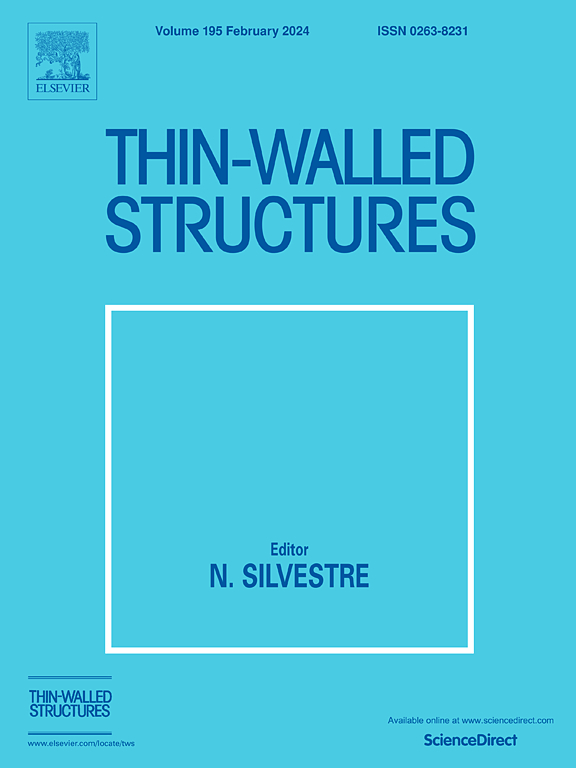Impact angle-dependent residual burst strength of thin-walled composite pressure vessels under low-velocity impact
IF 5.7
1区 工程技术
Q1 ENGINEERING, CIVIL
引用次数: 0
Abstract
Thin-walled composite pressure vessels exhibit a promising potential for energy storage, but they are vulnerable to barely visible damage from random impacts. Yet, angle-dependent damage mechanisms remain unclear, challenging the structural design to resist impact loadings. Herein, this study elucidates the residual burst strength of composite vessels under low-velocity impacts, guiding impact-resistant design at varying impact angles. The impact damage model based on a segmented golden-section search algorithm enhances computational efficiency and accuracy. Results show that matrix damage intensifies within helical layers under small-angle oblique impacts, while fiber damage consistently concentrates in hoop layers, with delamination between the hoop and helical layers decreasing from the outer layers inward. Furthermore, impacts at different angles shift potential failure locations within the vessel, with small-angle oblique impacts resulting in a low peak impact force. Notably, increasing the proportion of the helical layer enhances resistance to oblique impacts, while thicker hoop layers improve resistance to vertical impacts; at high energies, both layers should be thickened regardless of impact angle. This work not only offers new insights into angle-dependent impact damage but also contributes to the design for impact-resistant enhancement of advanced composite pressure vessels.
求助全文
约1分钟内获得全文
求助全文
来源期刊

Thin-Walled Structures
工程技术-工程:土木
CiteScore
9.60
自引率
20.30%
发文量
801
审稿时长
66 days
期刊介绍:
Thin-walled structures comprises an important and growing proportion of engineering construction with areas of application becoming increasingly diverse, ranging from aircraft, bridges, ships and oil rigs to storage vessels, industrial buildings and warehouses.
Many factors, including cost and weight economy, new materials and processes and the growth of powerful methods of analysis have contributed to this growth, and led to the need for a journal which concentrates specifically on structures in which problems arise due to the thinness of the walls. This field includes cold– formed sections, plate and shell structures, reinforced plastics structures and aluminium structures, and is of importance in many branches of engineering.
The primary criterion for consideration of papers in Thin–Walled Structures is that they must be concerned with thin–walled structures or the basic problems inherent in thin–walled structures. Provided this criterion is satisfied no restriction is placed on the type of construction, material or field of application. Papers on theory, experiment, design, etc., are published and it is expected that many papers will contain aspects of all three.
 求助内容:
求助内容: 应助结果提醒方式:
应助结果提醒方式:


